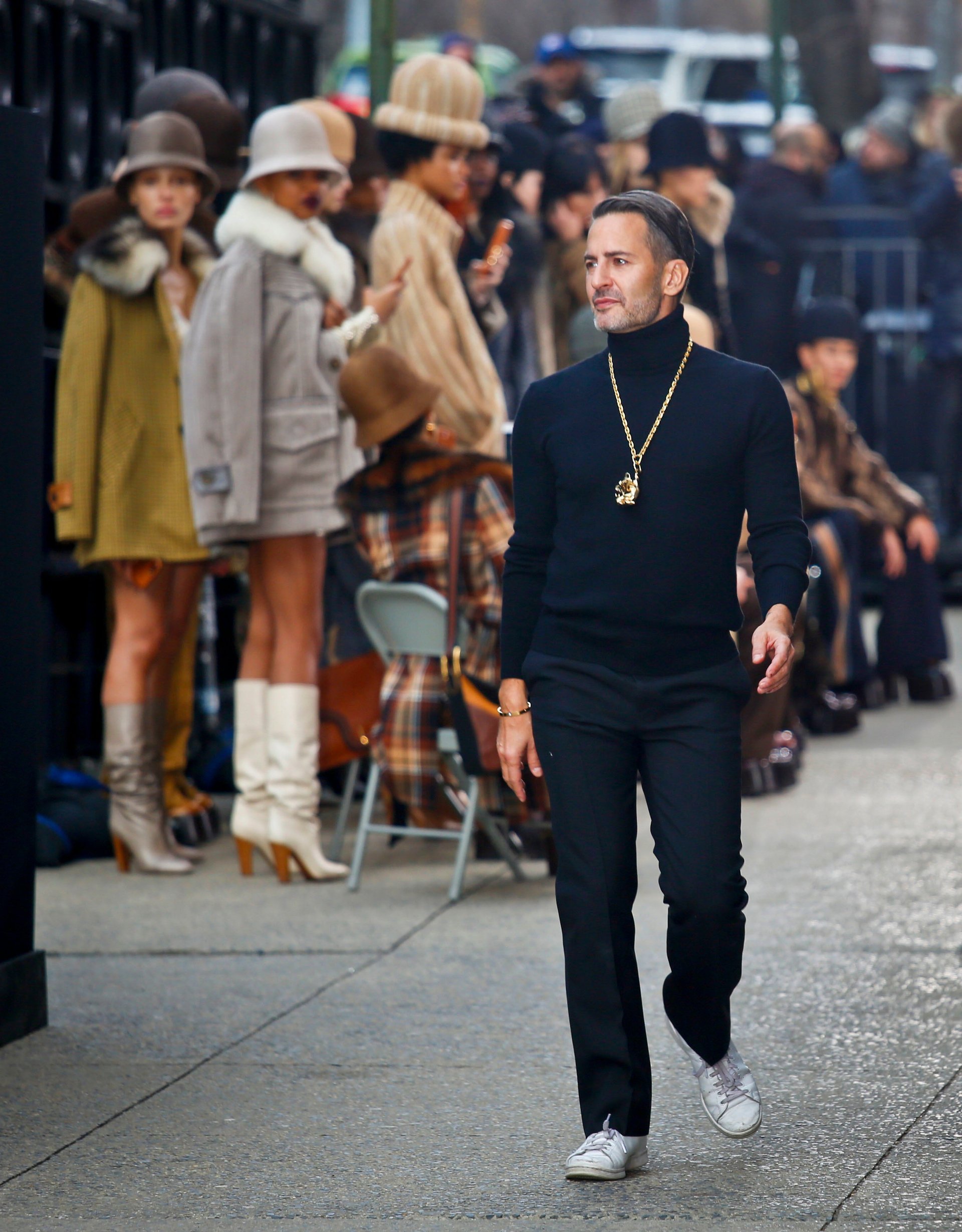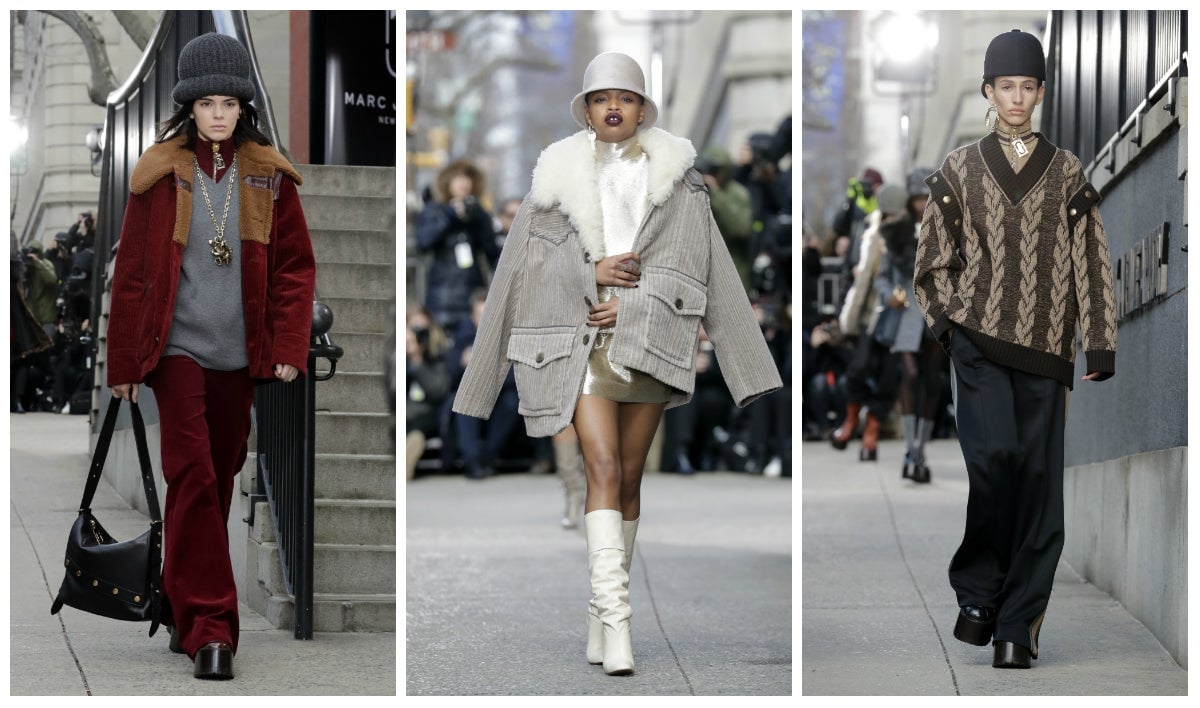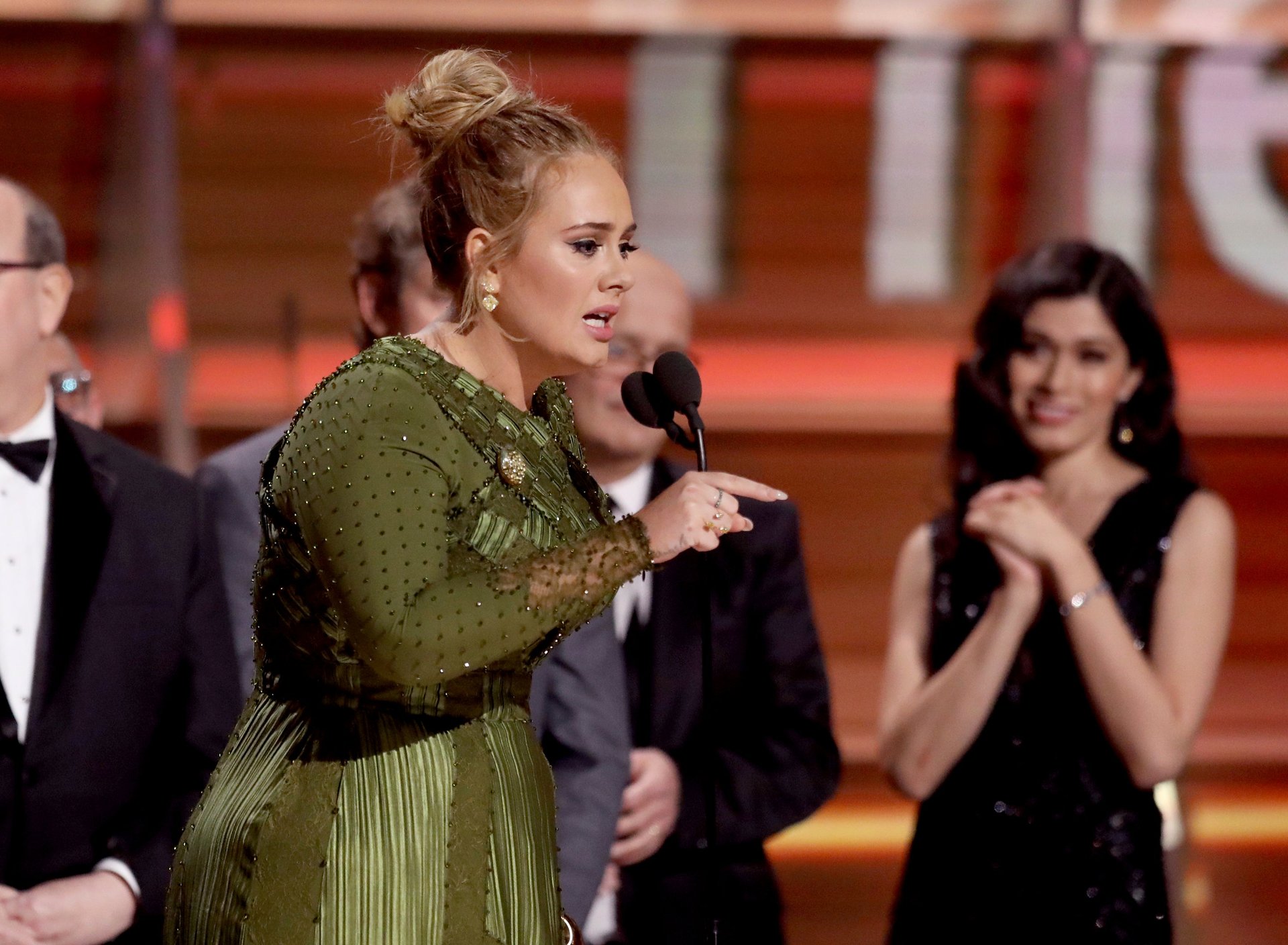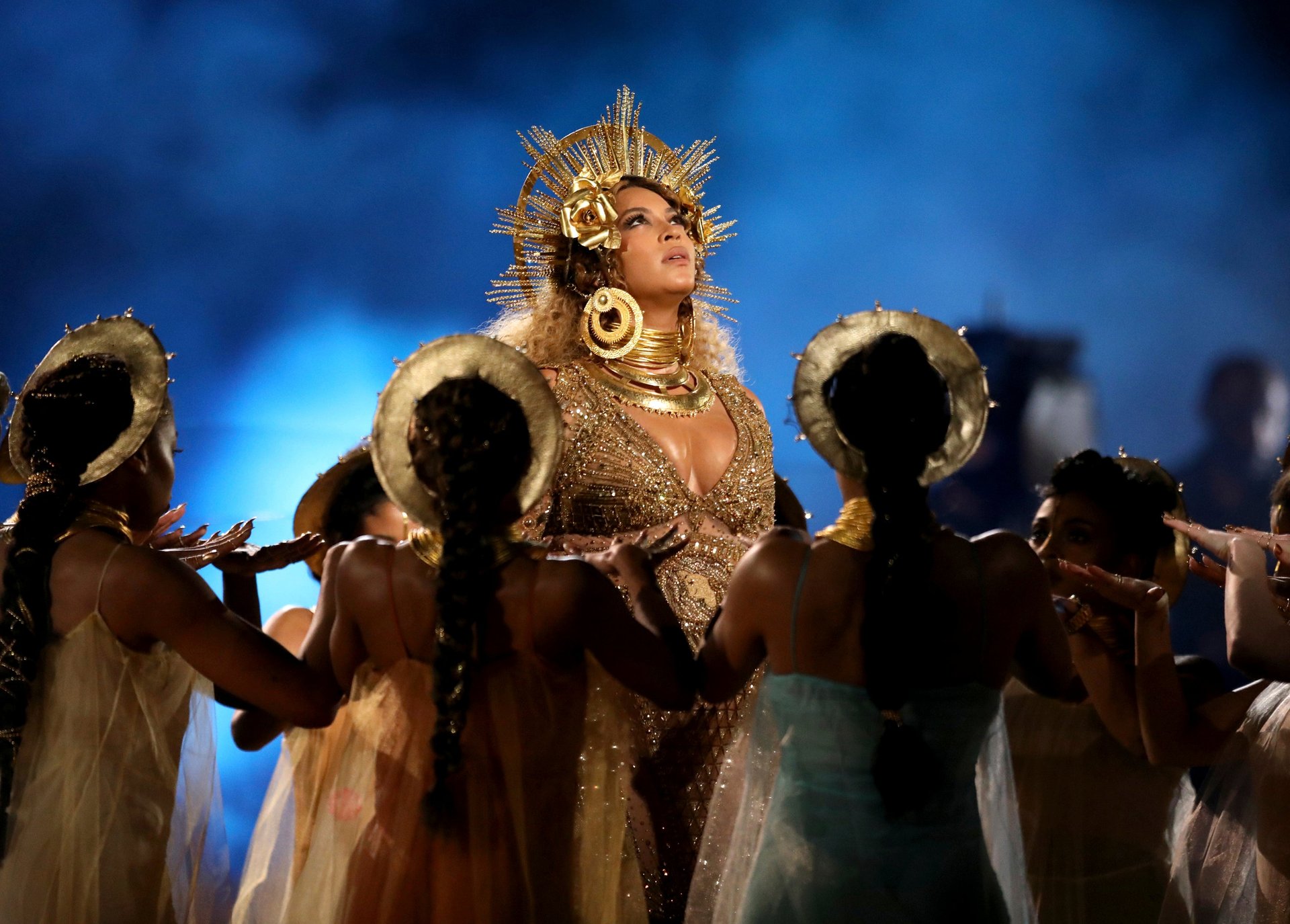Marc Jacobs and Adele prove addressing race—and racism—in the arts is a risk worth taking
On Thursday (Feb. 16), Marc Jacobs closed New York Fashion Week with a collection that included track pants, oversized fur collars, bucket hats, and heavy pendants and chains that unmistakably drew from early hip-hop culture. It was a bold move. Last season the designer, who is white, drew the ire of the internet when he showed his Spring/Summer 2017 collection on a cast of largely white models wearing rainbow dreadlocks.


On Thursday (Feb. 16), Marc Jacobs closed New York Fashion Week with a collection that included track pants, oversized fur collars, bucket hats, and heavy pendants and chains that unmistakably drew from early hip-hop culture. It was a bold move. Last season the designer, who is white, drew the ire of the internet when he showed his Spring/Summer 2017 collection on a cast of largely white models wearing rainbow dreadlocks.
“Cultural appropriation!” his critics cried of the hairstyle, which it most certainly was.
This season, there was a conspicuous absence of outrage after Jacobs sent out clothing and accessories that echoed those worn over the years by black musicians including Andre 3000, LL Cool J, and the members of Run DMC. Why? Maybe because the US president gave everyone plenty else to get outraged about. (Just kidding; there’s no finite supply of outrage on the internet.)

More likely, it’s because Jacobs went out of his way to craft a statement, which he published in an Instagram caption, that properly acknowledged and appreciated the culture from which he drew:
As a born and bred New Yorker, it was during my time at the High School of Art and Design when I began to see and feel the influence of hip-hop on other music as well as art and style. This collection is my representation of the well-studied dressing up of casual sportswear. It is an acknowledgement and gesture of my respect for the polish and consideration applied to fashion from a generation that will forever be the foundation of youth culture street style.
What’s more, he showed the clothing on a racially diverse group of models. (Each wore makeup to enhance—rather than homogenize—her features, an approach that’s unfortunately rare on the runway.)
The statement was also shared in written form with guests at the Fashion Week show. The headline printed on that page, according to the Washington Post’s Robin Givhan, was “Respect,” lest anyone misunderstand the designer’s message.
It was as if, after last season’s kerfuffle, Jacobs asked himself and his detractors whether there was an appropriate way to, well, appropriate elements from a culture not his own.
The answer turned out to be: Yes.

I, for one, am glad Jacobs pulled this collection off, door-knocker earrings and all—and not just because I love these jackets. Any artist—or any American, for that matter—can tell you no one works in a cultural vacuum. One of the joys of living in a diverse society is exposure to people whose backgrounds are different from our own, and who inevitably influence our style, sound, palette, and point-of-view. It would be a true shame if the fear of offending had a chilling effect on cross-cultural pollination.
But multicultural as our society may be, it’s far from a level playing field. So to truly embrace pluralism, privileged artists—which is usually to say, white—must acknowledge their advantage, as well as the contributions of those who are frequently sidelined.
It’s an awkward dance, and perhaps trickiest when improvised in the spotlight.

That’s just what Adele did at the Grammy Awards last Sunday (Feb. 12), after her album 25 won album of the year. Much of the world—including Adele herself, if not the Recording Academy—understood Beyoncé’s Lemonade, a groundbreaking multimedia homage to powerful black women, to be the defining album of 2016.
Adele acknowledged that fact in a fraught speech that hit notes both appropriate (addressing Beyoncé directly, saying how “monumental” the album was to her and thanking the artist for baring her soul) and uncomfortable (“I want you to be my mummy”). After the show, while addressing the press, Adele broke her statue in half, perhaps inadvertently using it as a stress ball. She said she remembered listening to Beyoncé in Destiny’s Child when she was 11 years old, and then blurted out what many of us wondered about the woman who that same evening appeared to us as a literal goddess:
“What the fuck does [Beyoncé] have to do to win album of the year?”
But the problem, of course, is not Beyoncé. (God, no.) The problem, as NPR’s Ann Powers wrote, is systemic racism. At the Grammys this plays out in the form of racially marked categories—See: Lemonade winning for best urban contemporary album, whatever that means—and the outdated “notion that music made with ‘real’ instruments and sung straightforwardly, like Adele’s softly tinged soul or Sturgill Simpson’s raucous country, require more skill and vision than those created within the synth- and sample-driven vernacular of hip-hop.”

None of this will change without participation from those occupying positions of privilege—which is to say, white people. So Adele was doing the right thing at her post-show awards conference, when she called attention to Beyoncé’s direct influence on her own career as a musician. She pointed out that Beyoncé has been making relevant music for nearly two decades, leading up to Lemonade’s soul-baring, internet-breaking visual album and multi-genre tracklist, which Adele again said was her own personal album of the year.
Of course, addressing race and privilege is risky, and the criticism of Adele’s approach was swift.
Writing for Essence, LaSha said the singer didn’t go far enough; she should have refused to take the stage in protest. Like some on Twitter, LaSha also bristled at Adele’s reference to her “black friends” who felt empowered by Lemonade. (On the other hand, many applauded it as an acknowledgement that indeed, Lemonade‘s intended audience was women of color—a fact Beyoncé herself stated in her own speech.) For NPR, Denene Miller wrote that Adele’s offhand remark to Beyoncé at the end of her speech—”I adore you, and I want you to be my mummy”—after Beyoncé’s performance paid tribute to motherhood, recalled a painful history of black women being forced to mother children other than their own.
All of these points are valid. They were honest reactions to Adele’s honest statements. And hopefully they will help spin this complicated conversation forward, so that next time the most deserving artist—irrespective of her race—will be holding the winner’s press conference. Sunday night, Adele showed that being an ally is often an imperfect art: It’s sincere, honest, fraught, and sometimes sloppy. Both she and Marc Jacobs demonstrated that acknowledging the shoulders they’ve stood upon as creators doesn’t make them any lower. Properly recognizing the contributions of black artists—and calling out the institutions that systematically ignore them—is one small step in leveling the playing field.
Should the makers of La La Land find themselves at the podium come Oscar night, they’d be wise to remember this.